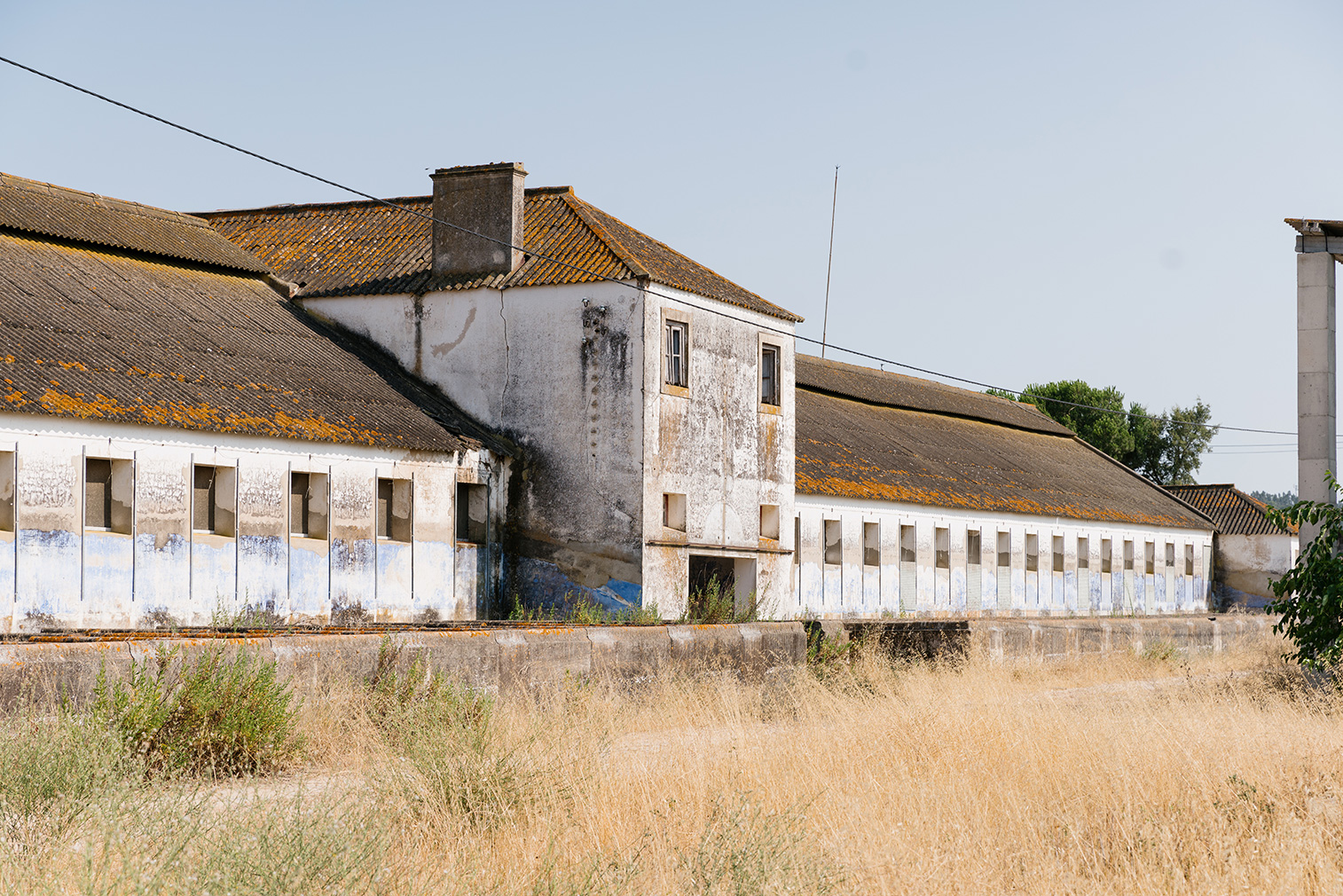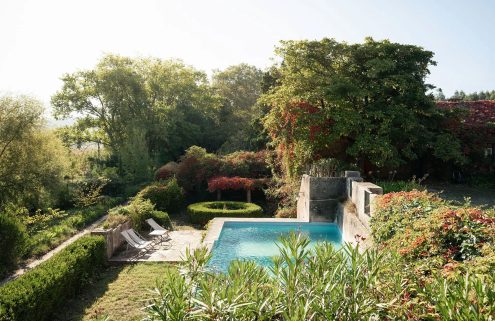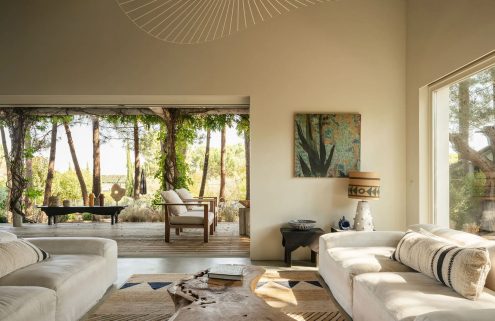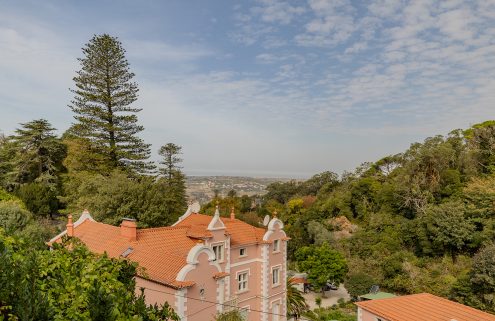When Romanian artist Mircea Anghel moved to the Portuguese countryside from Lisbon, a new world of materials became directly available to him. Anghel is an artist who works with the raw elements that surround him – wood, stone, salt, wine, water, fire.
The 1500 sqm warehouse he has called his studio since 2019 is a sawmill, active since the 1940s. It is located in Herdade da Barrosinha, an agricultural estate in Alcácer do Sal, around which Anghel has started a growing creative community, together with Belgian interior designer Lionel Jadot’s Zaventem Ateliers in Brussels.
“The scale of the space is changing my work. I’m building things that are generally too big for a normal house, but here everything looks very small”

Anghel is best known for his iconic gravity-defying tables. However, moving here has brought a new dimension to his work. ‘The scale of the space is changing my work’, he says, ‘I’m building things that are generally too big for a normal house, but here everything looks very small’.
That, and the fact that the mill is still used by workers manipulating heavy machinery. ‘You can’t arrive to a space and just treat it as four walls – even if this is my studio, I keep the saw mill active and support the community. These people are part of my work’.
Anghel takes us on a tour of his studio, where the sounds of machinery working and the tropical grooves of Bossa Nova play in the background.

Tell us about this space.
Mircea Anghel: This is an old sawmill that [dates from] the 19th century. It is part of a big estate that wanted to be independent and autonomous, so they had all the necessary manufacturing industries and more. While the metal, ceramics and other workshops closed over time, the sawmill has remained open.
How different were your previous studios from this space?
My first request for a piece of furniture was in Lisbon eight years ago when I was working on the weekends on the sidewalk in front of my house. When it rained, I would work in my very small bathroom.

Working on the street gave me the courage to quit my job in finance and get a small corner space in a studio with some friends. I was getting more work, and some pieces were not even fitting in my workshop.
Then I moved to a bigger space, a garden in Rua do Olival. This was the place where I learned the most and possibly where I made the most mistakes. After that, I worked in a beautiful warehouse in Santos. We had many parties, concerts, dinners; the place was always open with people coming in and out.

How has your current studio space affected your work?
The biggest change is the scale here. Everything loses scale. The objects I’m going to build are probably going to change because of that.
The previous manager here, Senhor Joaquim, dedicated his skills to boat building because we have a 60-year-old saw that can cut very long wood. To this day, shipyards from around Portugal come here to buy wood because commercial wood has reduced in length. For me, that’s also a very big, significant culture to receive, accept, and mix with.

All the people that work here influence me. Calminhas – the fisherman and boat builder who showed me how to work with wood in the beginning – still works here building boats. Knowing all these people, their simplicity, thoughts, and way of living changed me a lot.
You use salt, water, fire, and, more recently, wine – tell us a bit more about the processes you use to treat wood.
Wine is a new element for me. It’s an obvious influence since Herdade da Barrosinha produces wine, I drink it every day, and I work in front of a winery. I discovered some old wine barrels and was impressed by their interior. I decided I wanted to bring this element to my work.

All the other elements like fire, freshwater, salt, in reality, are traditional methods of treating wood. Salt was a very popular method to protect it from bugs and weather decay here in this area. But even though these processes are far more natural and unharming for the environment and for us, these techniques were left behind with the invention of chemical treatments. I’m currently working on a project where we’re trying to bring back this technique to treat the wood for exterior construction. After all, we are in Alcacer do Sal – the ‘Castle of Salt’.
“The digital era brings us this opportunity. We can work and be productive wherever we want and sell our work globally”

What is it like to live and work in the countryside, away from urban centres?
Living far away, I think, is very positive. You’re not constantly being influenced by all the work that’s being developed by everyone else. I have the ability to think, to look, to observe. It’s very inspiring.
I get a lot of visitors. We are lucky to have a beautiful house a few metres from my workshop with rooms that we’ve restored. We’re able to receive people to stay with us and see what we are working on. It turns [business] relationships a bit more personal.

Nowadays, I think it’s very possible to leave cities and move back to enjoy and embrace all the opportunities that the countryside offers. Not only in Portugal but [across the world]. I think the earth needs that, nature needs that: to be treated, to be taken care of. I think the digital era brings us this opportunity. We can work and be productive wherever we want and sell our work globally.
I hope and expect that people will go back to the countryside [and] to abandoned places; to re-learn; re-appreciate and (little by little) change the world.

What are you currently working on?
I just finished my first piece with metal, called Lose Control, that’s currently on show at Milan Design Week. I was interested in capturing the condition of not having control over anything in life. The three pieces I’ve created are a result of a series of crafted explosions we did over the summer, combined with wood.
I have another project that’s a huge modular system developed with Belgian interior designer Lionel Jadot for a 100-room hotel in Lisbon called JAM. The main idea is to repurpose, recycle, reuse. We’re going to have very few pieces of wood in reality: mainly recycled plastic, metal, and wood.
And the rest is my normal work: some tables, some experiments with wine and water vapour.































